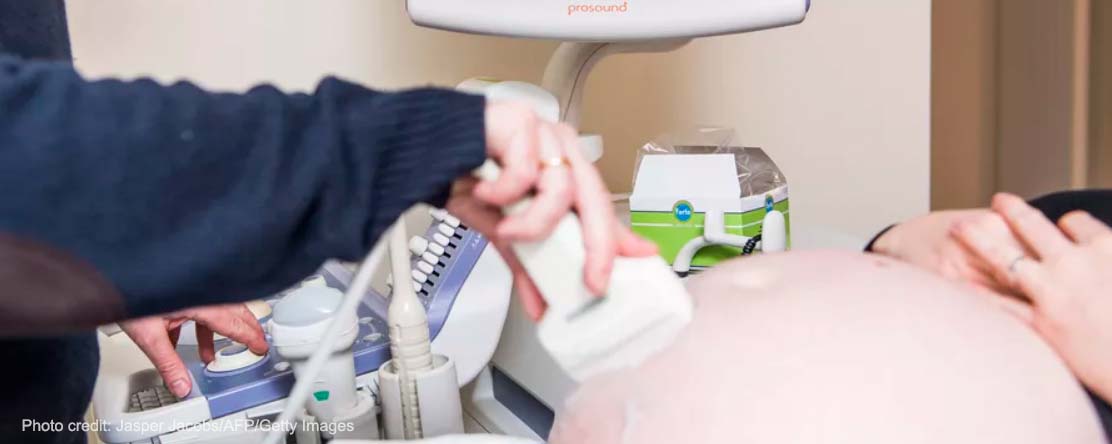
In the News
These Policies were Supposed to Stop Pregnant Women from Drinking. New Study Says They’re Hurting Babies

Forty-three states have policies targeting pregnant women who drink. Researchers say they’re backfiring.
Few debates in maternal health are as heated as the one around drinking during pregnancy.
Experts agree that heavy drinking can harm a developing fetus, but there’s widespread disagreement on whether smaller amounts are safe. Meanwhile, efforts to protect future children by getting women to stop drinking—sometimes even before they become pregnant—have been criticized as paternalistic and unnecessary.
Now, new research suggests that those efforts could even be harmful.
In a study published on Wednesday in the journal PLOS ONE and provided to Vox exclusively ahead of publication, Meenakshi S. Subbaraman, a biostatistician at the Public Health Institute’s ARG, and Sarah C.M. Roberts, an associate professor of obstetrics and gynecology in UCSF’s Advancing New Standards in Reproductive Health (ANSIRH) research group, looked at state policies designed to stop pregnant women from drinking. They found that several of these policies, including posting warning signs in bars and restaurants and defining drinking while pregnant as child abuse or neglect, are actually associated with worse health outcomes for babies, specifically low birth weight and premature birth. One reason, the researchers say, is that the policies can actually discourage women from seeking prenatal care.
“Usually, when we talk about harms from substance use during pregnancy, we talk about the harms from the use itself,” Roberts told Vox. But in the study, she and Subbaraman also found “harms from the policies that we adopt in response.”
The results have implications for how doctors treat pregnant women and how state governments approach maternal health. And the issue goes beyond alcohol — as states legalize marijuana and consider strategies to combat opioid addiction, they’re struggling to figure out how to approach the issue of maternal drug use. The study by Subbaraman and Roberts suggests that when it comes to protecting children’s health, scaring moms could do more harm than good.
States have enacted lots of policies to stop pregnant women from drinking. They might be hurting babies.
Drinking during pregnancy can cause miscarriage, stillbirth, or a range of disabilities known as fetal alcohol spectrum disorders (FASDs), according to the Centers for Disease Control and Prevention. People born with FASDs can have problems with learning and memory, speech and language delays, and problems with organs like the heart and kidneys.
After an influential paper on the effects of maternal alcohol consumption was published in 1973, policymakers started trying to discourage pregnant women from drinking, OB-GYN Dr. Jen Gunter wrote at the New York Times earlier this year. The number of states with policies around alcohol and pregnancy—like requiring warning signs about the effects of maternal drinking in places where alcohol is sold—went from one in 1974 to 43 in 2013.
Roberts told Vox she started thinking about studying these policies after working with pregnant women in Northern California who used alcohol and drugs. In studying the barriers keeping some of these women from getting prenatal care, she found “that they were really scared of being reported to Child Protective Services and having their children removed.” Some of the women she worked with were also “really worried that they had already irreversibly damaged their babies, and that if they went to prenatal care, that they would get some confirmation of that”—and perhaps be judged by a doctor or have their use publicized in some way.
Roberts wanted to find out if what she saw in California held true nationwide, and how state policies might affect women’s fears. For the study published Wednesday, she and Subbaraman decided to look at the effects of a variety of policies, including mandating warning posters in restaurants and other places that sell alcohol and classifying drinking during pregnancy as child abuse or neglect. The researchers also looked at policies aimed at helping pregnant women who drink or use drugs, like giving them priority for substance abuse treatment or limiting criminal prosecution for drinking during pregnancy (for example, by prohibiting the use of prenatal medical test results in criminal trials).
Somewhat surprisingly, the researchers found that each of these four policies—including those designed to help women—had significant negative effects. They led to an increase in the number of babies born prematurely or at low birth weight.
Originally published by Vox
More Updates


Safeguarding the Health and Wellbeing of Agricultural Workers in Monterey County: A 5-Year Glance at the COVID Pandemic & Lessons Learned

New Study Reveals Why Alcohol Use Increased During the Pandemic

PHIL Collective: Tools, Training and Resources for Collaborative, Cross-Sector Efforts to Improve Health and Equity
Work With Us
You change the world. We do the rest. Explore fiscal sponsorship at PHI.
Support Us
Together, we can accelerate our response to public health’s most critical issues.
Find Employment
Begin your career at the Public Health Institute.
